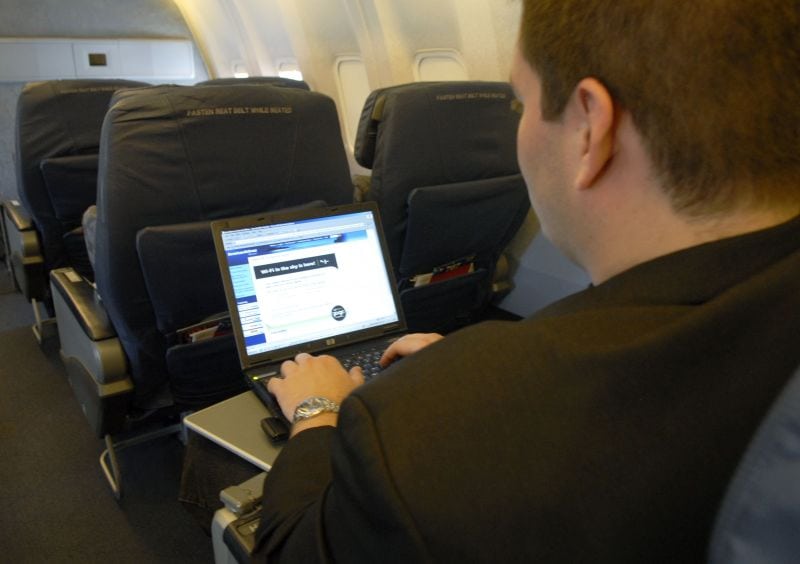[Avionics Today 11-14-2014] Following AT&T’s recent decision to drop out of the In-Flight Connectivity (IFC) market, Gogo CEO Michael Small addressed a crowd at the Wells Fargo Technology, Media and Telecom Conference yesterday regarding Gogo’s future as well as the many barriers to entering the aircraft connectivity scene. AT&T, which announced its entry into the IFC sector in March of this year with what they planned would be a high-speed 4G LTE Air-to-Ground (ATG) network, cut the cord to its connectivity campaign to focus on the recently acquired Mexican wireless telecommunications company, lusacell.
 |
| Passenger Using GoGo in-flight connectivity. Photo: Gogo |
With AT&T now focusing its efforts elsewhere, Gogo stands to gain both revenue and respect, as denoted by soaring stock prices for the IFC provider directly following the Nov. 10 announcement. Small spoke little of soaring stocks, however, and took the opportunity to address the difficulties of entering the IFC sector.
“The barriers to entry in this business are extraordinary,” he said at the conference. “You need extensive telecommunications knowledge because nothing off the shelf works. You have to design and invent and write software and build pieces of equipment that no terrestrial operator ever does. So that’s a real challenge.”
Moreover, technology isn’t the only obstacle when it comes to connecting the skies. Small also stressed the need for extensive knowledge of the aviation industry for anyone wishing to enter the market as a competitor.
“You need to know the specialized requirements of aviation to certify any of that equipment,” he said “Not only the piece of equipment but the installation of it on a particular plane is a burdensome challenge. You need to be able to take care of that equipment wherever it may be on the face of the globe as airline businesses are almost exclusively global, really.”
Bandwidth offers yet another challenge, piling it on to the already lengthy list of technologies and engineering obstacles that need to be overcome, according to Small. “Because the engineering task of getting the bandwidth to the plane is difficult, the number of additional systems and bandwidth management we deal with is just more extraordinary than anything I’ve ever seen on the ground,” he said
To develop the technology, know-how and global strategy is an undoubtedly daunting task, and AT&T’s speedy exit from the market, just 6 months after announcing its entry, will likely scare off future competitors. The costs of entering the market, alone, are enough to discourage potential IFC companies. Gogo has spent $1 billion setting up and establishing its networks, spectrum, technology and services, according to a report distributed by Wells Fargo Senior Analyst Andrew Spinola, but the company believes it is now seeing the fruits of its labor.
“Given there are those huge upfront investments to get into this business you need a lot of aircraft and today we have 4,700 broadband aircraft. That sounds like a little number but it’s against the universe of 40,000 planes in the world and it’s almost eight times the size of our closest competitor,” said Small.
Small didn’t say that Gogo is seeking to acquire AT&T’s spectrum but did note that the company would be willing to negotiate should AT&T be looking to lease it. Gogo would potentially use this spectrum to expand its services, which include focusing on its global 2Ku solution and developing technology for the 14GHz network.
The spotlight is on Gogo to deliver in connectivity and essentially, what it takes to make it in the market, according to Small, is patience and numbers.
“Ultimately if you’re going to make the numbers work you have to be willing to divide by a lot of aircraft, and I think that proves itself out in a lot of ways and we now have been reporting a 50 percent growth margin for a considerable period of time even taking into account the international startup,” he said. “By our analysis that’s about 50 percentage points better than our closest competitor. About break-even is the next and we think a lot of the other competitors are bleeding badly at the growth margin level. You need the scale to win in this business.”